—
Listen to the podcast here:
Working With An Architect With Dory Azar
Architect Dory Azar joins me in this episode to talk about working with an architect. Dory is a Canadian architect. He is celebrating ten years of running his own firm. Here’s my conversation with Dory.
—
Dory, I know you’re a busy guy, so thanks for coming on.
No problem. Thanks for inviting me.
You’re an architect and a Canadian. I think you’re my first international guest. What are we going to talk about?
It’s renovations and additions.
If you’re renovating your house, you might be changing it a lot, adding a second floor or an addition.
I don’t think I’ve ever done an addition that didn’t touch any other part of the house where it’s a clean brand-new space, not redoing the flooring throughout or trim or whatever. There’s usually a renovation associated with it.
I can’t even imagine how that could be possible. How could you add this to be like a caboose to a train?
Let me think about that. I don’t know. It’s short of the screened room or back porch or something like that. You make me think about that one.
Anybody is planning to do that in the first place. They always add stuff on as the process goes on. It’s very real. You mostly do new houses. How much of your work would you say is additions and renovations?
Since COVID started, it’s probably 60%. It’s a little more than half. We found that with COVID. I don’t know where you’re living right now but in our area, the land and material costs have gone absolutely crazy. People weren’t traveling and weren’t going anywhere. We have a lot of people coming to us to help improve their existing property, whether it was a small addition or a massive overhaul, and everything in between. People started to invest in their own properties.
It made me wonder how much they spend on their vacations. People would always say, “We’re not going anywhere in 2021, so we’re going to put a pool in.”
You take $60,000 vacations every year. That’s very cool. If I’d say 50% to 60% is a renovation, probably 40% to 45% is new construction, and then there’s a little bit of commercial work that we do in there for some repeat clients.
If you’re not clear on something, the opportunity for the assumption is enough to derail the project. It’s always a good idea to start with your architect.
When you think about a renovation, what would you want a homeowner who has never done anything like this to know?
The first thing they should know is they have to have somebody that they can work with on their side. I’m going to be here advocating for architects. I think nobody is better suited to control the trajectory of that project than the right architect. In our area, at least, we’re a very contractor-driven area. The thought often here is when somebody wants a project or addition built, they go to a builder. There’s a logical connection there. They can help me facilitate the project.
That’s not a bad phone call. You’re going to need a builder at some point. I think the right first phone call is to interview your architect or architects to see who is that person you’re going to connect with, or who is going to be shoulder to shoulder with you to help you vet through some of those murkier parts of the renovation.
There are lots of decisions to be made and if you don’t make them, then the contractor or the builder is going to make them. I always use the example of trim or baseboard. The homeowner might think it is going to be this way and the builders are making a different assumption, so it’s not the same.
Builders are builders. They’ll do whatever you ask them to do but you’re right. If you’re not clear on something, the opportunity for the assumption is enough to derail the project. It’s always a good idea to start with your architect. I forget where I heard it, but they compared the architect to your general medical practitioners. Architects are the specialist in this case, but they are going to see the big picture. They’re not making decisions in isolation. They’re not saying, “That’s siding that we have to use,” without backing up and saying, “How does it tie together with everything else?”
That’s why architects are important and valuable because they’re looking at the whole project and not just one element. If you consulted your countertop company on countertops, they’re going to sell you the highest end countertop that they have because they think that that’s the best thing for the project or flooring or whatever. If you talk to those people in isolation, you might end up with very high-quality things across the board, but they don’t work well together. Having that design professional on your side, that can say, “No, you don’t have to spend that much on that thing. You can spend at this price point because it works great with that price point. We have a little a couple of extra bucks to save to apply to something else.”
If they don’t know when to call an architect or in some cases, an interior designer or some other design professional, how would they even when know to call, to begin with?
It’s one of the things that architects have to keep doing better. Social media has been nice for helping spread the word, not only from architects projecting what they do. I often get tagged in a Facebook or an Instagram post where somebody says, “I’m looking to put an addition on my house. Who should I call?” People who do know you and know you do that thing are quick to throw your name out there. That’s our opportunity to prove our value and our knowledge, and make the homeowners feel comfortable.
As someone who has never done this before, what should they expect?
Let me talk about my process. If somebody called me and said, “I want to put an addition on my house and renovate the rest of it.” The way our office works is we always try to get a big picture understanding of what the point of the addition is. Sometimes people say they want to add 2 or 3 bedrooms to their home, but it turns out that it may be just a reconfiguration. What they currently have might need to only add one bedroom or something like that. We generally sit and meet. We take inventory of what they have, what they need, and what we can do. Sometimes people say, “I want to build 20 feet out the side of my house.” I said, “You only have 10 feet there.” We’re landlocked and helping with that.
Once they’ve signed a contract and are working with us, there’s the conversation of understanding what they want and what the purpose of the renovation is. Is it to freshen things up? Do you need more space? Do you want more space? In ten years, will that space be used the same? Is it a young family? Is it a retired couple? Those are clues as to how well the renovation is going to age. We try to understand them and their lifestyle as much as possible so that we can put all that in a blender and make it work.
An open mind always helps too. Anytime a homeowner comes to us, I’m going to loosen them about the process. They understand that renovation is a renovation. There are things behind the walls, attics and below-grade that we don’t have x-ray vision of. We can’t see ahead of time. Based on the age of the home, you make some assumptions and selectively demolish what you can to investigate certain things. Knowing that all the things that we’ve prepared, you might have to meander around a plumbing stack if it’s in an unfortunate spot that’s too hard to relocate or the things like that.
An open mind is an important thing to bring to the table for a client. When you do hit a speed bump or hiccup along the way, which I’m sure in your experience, they happen especially once the construction starts, building inspectors are on-site and the interpretations. Nothing is the end of the world. Every everything will get worked through, but there are snags along the way. It’s working with the architect on being clear about what you want and the open-mindedness of what it could be.
It’s managing expectations in all of life, but also in renovations. I have seen people be so disappointed, which I think comes out as anger. If you have rigid expectations that may also be unrealistic, it’s not going to be comfortable.
I love those rigid expectations. That’s a great word combination there. I’ve worked with people who are very firm, “It has to be this. It has to be that.” If you have to move that door opening over 4 inches, it’s the end of the world. The next time that that window had to be lowered an inch because of whatever, that multiplies the disappointment.
When we look back in five years, those are not going to the end of the world things that happened to your project. If you’re expecting everything to go absolutely perfect, everybody is trying to and sometimes they do. Sometimes you hit a home run and it goes great. I’m involved in a couple right now. You’re taking baby steps through the process because you don’t know what that next thing is like flood plans, poor soils, and rotted structures. You have to come to the table with an open mind. Those clients are but if you come in with, “It’s got to be this and it has to be exactly like that,” I think disappointment is going to be a lot easier to find.
No matter whether you hire an architect or a contractor, you’re still going to have the rot, as you said earlier, the bees in the wall, but we help them through difficult processes. There was one project where there were a bunch of things that were not turning out the way I had expected them to. I needed to have flexibility as well. If I draw it a certain way and then they don’t build it that way, I have to decide whether it’s worth forcing them to rebuild it, which I could or whether I need to make it work.
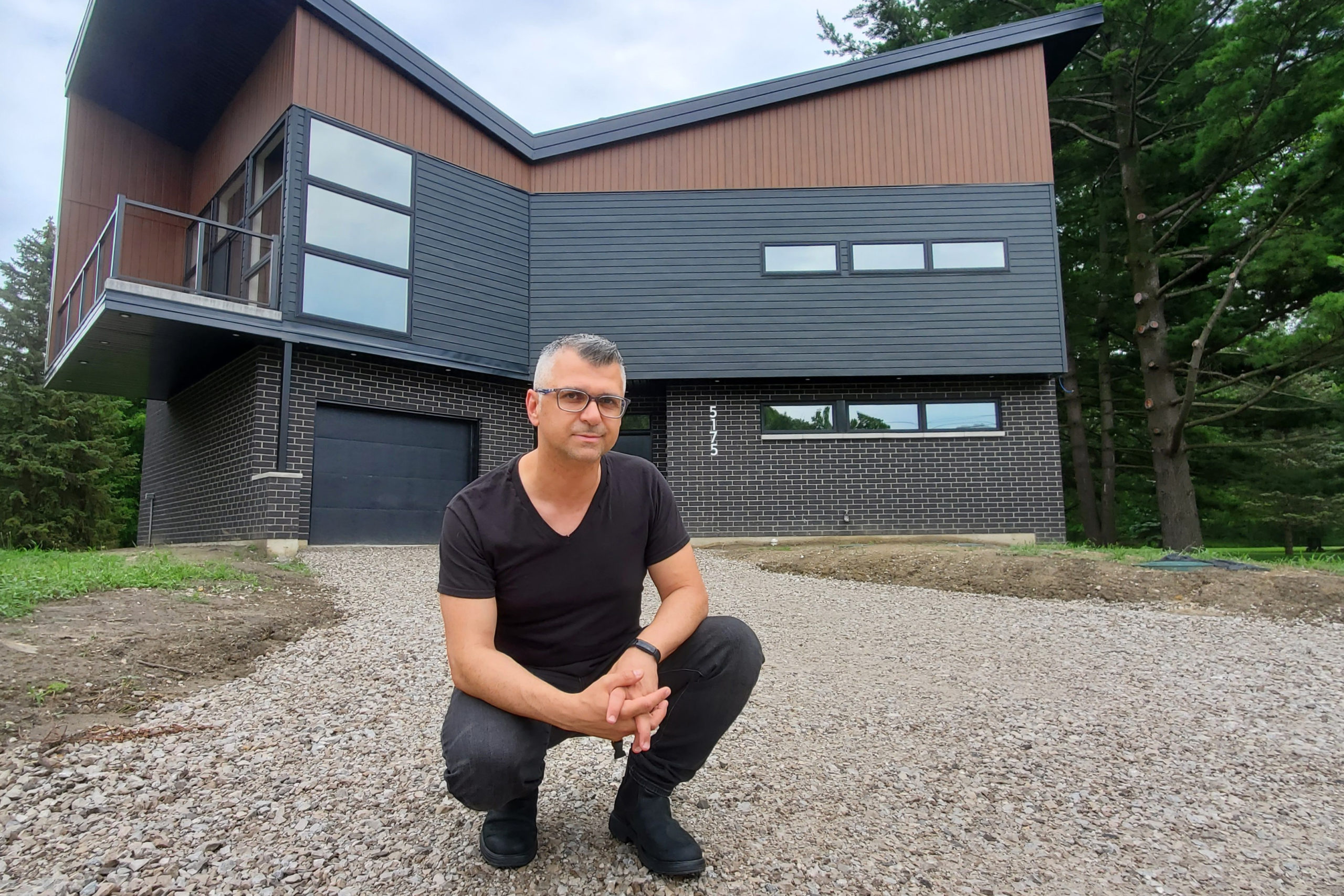
Let’s talk about the architect having to be flexible too. It’s not just the client that has to come to the table a little bit flexible. Even the architects as well. In any given renovation project, a lot of times, they have an idea of what they want, but sometimes they don’t know the potential of what they’ve got. They might say, “I need A, B and C,” you might start working on it and realize that there’s a D or an E that they hadn’t thought about. It’s on you to pitch that back to them. If it’s a clever solution or a good idea, they might need some time to think about some things. You can’t always steamroll your clients. Everybody has got a schedule.
Let’s talk about schedules and managing timelines. Homeowners, oftentimes, are spending hundreds of thousands. You can’t expect them to make a decision in an hour, in a day or on the weekend, especially if it’s a renovation. This has happened to me a couple of times where they’ll meet at my office and we’ll go through the design with them. They’ll take those drawings home and walk their house with them. They’re looking at the drawings and that wall.
They come up with a few options and then they want to sleep on them. I don’t blame them. You can’t force people to make a big decision in an unreasonably short amount of time. At the same time, you can’t give them two months to make a decision. That’s going to derail the whole schedule of your office and their project. It wouldn’t be unfair for a homeowner to expect a patient architect as well.
I find a lot of contractors might not be that fond of architects. This could be because they’ve had experiences in the past where architects are pretty inflexible. Big things go awry during the framing, in my experience. I find that framers sometimes think a little bit too much for themselves. I know that sounds not very nice on my part but they think, “We should build the wall over here because it makes more sense to line it up with a lower wall,” for example. This happened to me years ago on a project. We’ve gotten permission to build this addition but we had to keep it in the setback.
It’s something like that. The Zoning Board of Appeals said that we had to put the wall back 1.5 feet or something. That’s the way it was designed but when I arrived, the framers had framed it out to the edge because it made more sense. You’d have a bigger room. That makes more sense but in that case, I had no choice because the town had given the permission to build it in a certain way.
Other times, I show up and it was supposed to be 7 feet to the top of the plate for an addition off the back, and then they built it at 8 feet because it’s better at 8, and also I don’t want to cut it. I was too late. It was all framed and it impacted the master bedroom above. I had to have different windows. There are ramifications but I had to go with that one and make it work.
I love contractors. My dad and my brother were once. I come from them. I’m cut from that cloth. Sometimes, things have come around and backfired on me in the past. We can’t put a lawn chair on the front lawn and be there 24/7 while construction is happening. People are going to make decisions without reaching out to you or interpreting things. Sometimes, a dangerous path of communication, if you’ve been hired by the client, is when the contractor gets directly to the client about, “The drawing shows this but I think it would make more sense if we did this. We do it all the time.” The homeowner says, “That makes sense.” “We need an answer now. Otherwise, we have to leave for the day, and we can’t come back for three days.”
The homeowner is going to say, “Okay. If you’ve done it before, let’s do it.” Katharine shows up and says, “That wall is 1.5 feet off. The ZBA won’t allow it,” and then there are problems. I find the path of communication is so critical sometimes because you don’t know when that room is 10 feet wide because they have a piece that’s going to fit on that wall. Don’t make it 9 feet wide because you don’t know their furniture. You don’t know their art situation, and what that wall is being used for. Trust us. I have a chat with contractors all the time. I said, “All the decisions have been made already. It’s one less thing that you have to worry about. Build it as we’ve drawn it, and if you run into a problem, don’t build it until we’ve had a quick conversation.”
It is all about communications and working as a team together with the contractor. They are involved and it’s their project as well as my project. I’m an advocate for the owners to get what they want, which we’ve already discussed probably over and over again.
In any given renovation project, a lot of times, they have an idea of what they want but sometimes don’t know the potential of what they’ve got.
It’s their project. We’re here to handhold it to fruition. I have this story one time. It was a commercial project we were working on. There was something that the contractor didn’t like about the way we had the window inset into the wall. It didn’t give him enough surface to cover the window the way he wanted to. He called me out there and was unreasonably upset over a detail that is doable. He just didn’t want to do it like that. I looked at him and said, “What would you do?” He looked at me and said, “What? I would do this and that.”
Nobody had ever asked him before his opinion. He always yelled at his whole life. I said, “What would you do?” He’s like, “I would do it like this.” I said, “Okay, next time, we’ll do it like that.” It diffused him completely. Maybe there’s a theme here of communication from all parties. Let’s be honest. You can’t rush a renovation either, and good communication takes time. Bad communications “save time” but cost a lot of money, stress and trust. Is trust a thing? Do you have to trust your builder?
Trust is a thing.
The guy or girl was going to rip your house in half and take over for a few months. It’s so easy to talk about patience but it’s so hard to exercise it. If there are any homeowners reading this now that are thinking about renovation, take deep breaths. It should all get done assuming you’ve selected the right team. It’s going to take patience all the way through. We’re experiencing huge delays in getting our building permits. The drawings are complete and in. Contractors are waiting to start but there’s that sweet spot in between where you’re waiting for your permit. Something that should take 2 or 3 weeks is taking 2 or 3 months now.
That’s the reality of where we’re at now. People are excited. They are anticipating the weather. They are trying to plan moving out so that the contractor can come in. It’s so hard to navigate that. It’s becoming cliche now but COVID has made it so much harder because of some of the lead times even once you start construction. Now, we’re experiencing real window delays. Could there be a more pivotal part of construction? The thing that seals the interior from the exterior, and you can’t break a side of drywall until the windows are in. Everything relies on those windows. You get your permit and order your windows immediately.
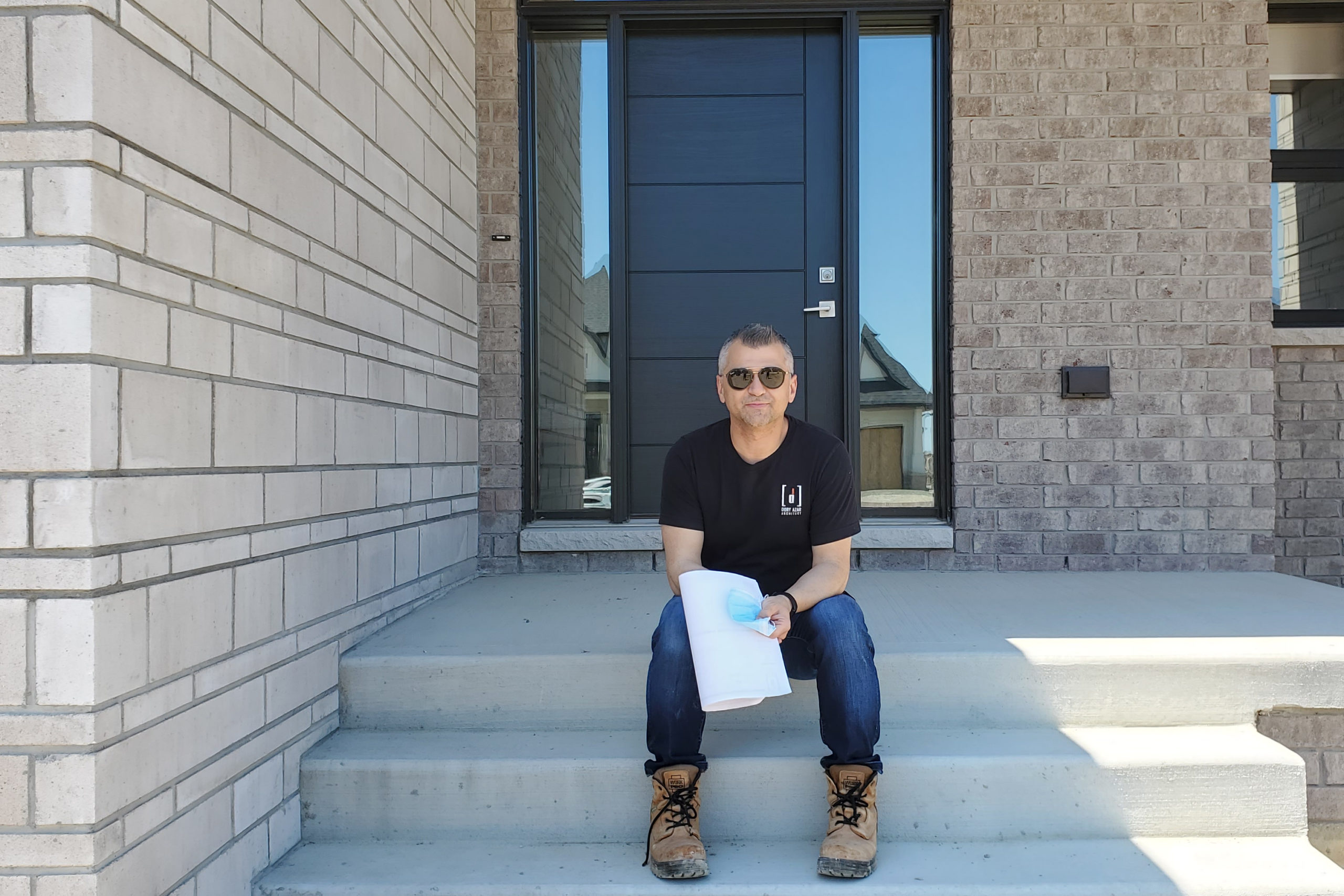
If there are any changes in the framing because you came across some conditions, you have to make it work. That’s where it’s like, “We’re going to order these windows like we planned and hope for the best.” For certain windows, I have heard 26 weeks. It’s half a year. That’s a long time.
Things do change. It’s like to frame that wall 1 foot taller, you might need a window that’s 1 foot taller.
An 8-foot wall needs a different window than a 7-foot wall potentially.
Somebody looks at it later and says, “The architect put a little teeny window in that wall. Why would they make a decision like that?” That’s a legacy of what we do. When the project is complete, everything is easy to pin on the architect. Why is that wall there? Why is it like that?” “I don’t know. It’s the architect.” I think the reward of it at the end is worth all the trouble through it. I don’t know but there’s nothing I find more fulfilling than watching that idea that you scribbled on a piece of paper one day over lunch because you had this thought about how two things could come together. Months later, there’s a group of people putting it together. It’s like, “This is gratifying.” The homeowners should feel the same way, I’d like to think.
When you run into them later at the store or something, and they talk about how much they love their space, that makes it all worth it.
The referrals later say, “John Doe gave me your number. They said they love what you did at their house.” The feedback like that where it’s not direct to you like, “You did a great job,” but you get referrals, and people name-drop that client. You’re like, “I liked it but I guess they did too. They just expressed it differently.”
That’s what it’s all about for me anyway. What else should anybody know if they are starting out? You mentioned patience.
You mentioned trust, patience and trust under renovation. I don’t know if there is anything else besides a contingency budget. Keep a few bucks off to the side just in case.
Do you bring the importance of trust when you are first starting a project with someone? Should we bring it up or assume it’s going to happen?
In the spirit of communication, I’d rather have that conversation now and have them say, “Yeah, I know what you mean,” than not bring it up and have it be a critical thing. The principles are the same whether in architecture and life. I just like trust. Let’s talk about two clients, the client who trusts you and the client who doesn’t. For some reason, they both hired you. The client who trusts you is going to have a much better and enjoyable process. The client who doesn’t trust you is looking for typos in your emails. They’re looking for something to latch onto and to make it bigger. Trust in your architect and trust in your contractor are huge.
That manifests in a million ways. Trust from, “You’re going to get back to me in a timely manner. You’re going to design me a safe building. You’re going to build me a safe building. You’re going to tell me when something is or isn’t happening. You’re going to want to be true to the project. If something is going to work, I’ll tell you. If something is not going to work, I’ll tell you.” Trust isn’t always good news. That does lead to some difficult conversations, but if everybody trusts everybody and everybody is comfortable with everybody, those conversations should be had.
Sometimes there are clients who are worried that this isn’t the way they wanted it and it doesn’t seem finished. I said, “Maybe it’s not finished. It’s possible that it’s not finished.” They haven’t said it is and you’re there in a non-meeting time. We need to wait until they’re presenting it to you. It may look disturbing in the meantime.
I’ve had that happen to me not a lot. Maybe 2, 3 or 4 times in my career where you show up to the job site, and you look at something and you’re like, “That’s supposed to be a 10-foot ceiling in that room. That wall they framed is only 8 feet and nobody is here.” Everybody wants to panic. You get a hold of the framer and he’s like, “We built an 8-foot wall. We double-checked. It should be 10. We’ve gone for lunch. We’ll be there in an hour and we’re going to fix that wall.” Rather than flying off the handle, it’s like, “Maybe there’s something that I don’t know here.”
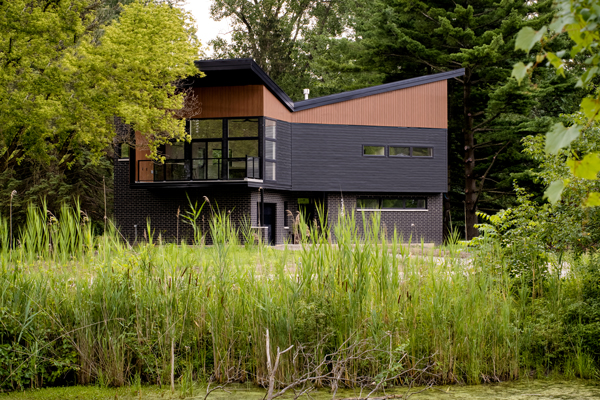
People don’t know what they don’t know. If everybody felt that way, I think the world would be an easier place to get along with. If the homeowner and the contractor felt that way, maybe there’s something about this that I don’t know. Let’s all get in the room and talk and not email. Email is great for what it is but if there’s a discrepancy, people are typing like their lawyers or whatever. If there is a simple explanation just get on the phone.
It’s easy to misinterpret something that’s written down like in a text. Texts are tough too because they are very short by their nature. If you think there’s a certain emotion attached to it, then you might misinterpret the shortness of the text. It leads to misunderstandings.
That’s a thing that most of my clients get a little conversation about before we start working together. Texting is for things like, “I’m running five minutes late. I’ll be there as soon as I can.” Emailing is for things that, “I’m thinking about making a change. Here’s my decision on that.” Anything that we need to maybe put in a reference for somewhere that we may have to call upon later. Phone calls are for something a little quicker and more urgent that you need or a quick opinion on. Don’t text me, “We’re going to go with the three-bedroom option,” that’s not a text. People do that all the time. I got one like that. There’s this project, an addition and renovation, that we’re working on. We’re doing a crawl space. It’s a 4-foot crawl space underneath the house.
She texted Melissa in my office, not even me, and said, “Can we make that 6 feet?” I’m like, “No.” It was after hours too. It was an after-hours text on somebody else’s cell phone. She’s like, “Will this cost more money? Will the contractor charge me more?” Send that in an email. That’s a good group email question. It’s affecting a lot of people. Melissa who gets a text at 7:00 PM has to remember to show it to me in the morning. I hope she doesn’t get ten other texts, which bumps that text off of her screen and all that stuff. I do have preferred methods of communication, depending on what they are trying to communicate.
It’s good that you bring that up. That’s inspiring me also to bring that up. Maybe have a checklist of things to discuss at the beginning. If someone texts me something like that, I know they’ve communicated with me. I’m searching my emails for the details. I can’t find it. It turns out that someone texted it. It had been buried for under 100 other texts that I get.
Once it’s off that screen, it might as well be gone. I have this way that I work. I’d rather have the difficult conversation now. To me, it’s the end result. How happy are we on the day you get your keys? If there are conflicts, disagreements, difficult conversations or anything along the way, if they’re all to make the project better, let’s have the no. What I don’t want to do is tell you what you want to hear for six months, and then you get your keys and you’re like, “What? My bed doesn’t fit,” or whatever. It still has to work.
It’s not just about getting to the next step. They have to be the right decisions to get to the next step. I know in additions and renovations, sometimes you’re building an addition. You’re just doing things. It’s always harder than designing a home from scratch. You’ve inherited a whole set of conditions that you have to respond to now. Sometimes we’re in a flood-prone area where we have to raise the addition higher.
Let’s say the existing first top of the first floor and the new top of the first floor should be 2 feet higher due to some new regulations that didn’t exist with the existing houses now. You’re dealing with a short flight of stairs in the house and how does that affect the exterior. Those are more steps to get up to any exterior doors. Does that involve landings? You can’t go ahead. The question I get a lot in renovations is, “Do I have to do that?” “No, you don’t have to.” “Then I don’t want to.”
Good communication takes time. Bad communications “save time” but cost a lot of money, stress, and trust.
It depends if they have a basement and everything.
Every project couldn’t be more different than the previous one. Even two of the same projects are still going to have different criteria and outcomes.
I worked on identical houses and one of those developments that were all made in 1967. The two neighbors are identical houses and totally different renovations because they had different priorities, budgets and everything. They’re never the same. One thing that I like about it as opposed to building new because it’s a different thing, but it feels less contained to me. It’s more like they’re spilled out. There are so many possibilities that I like the restrictions of. The tighter, the better in a way because then I can be more creative with how can we make this work in a way that’s going to be the best possible.
I love a compact, awkward challenge design. Even working on it, I’m a nerd for tight planning solutions. Where can we sneak a closet? How do we interlock these spaces? I love those puzzles.
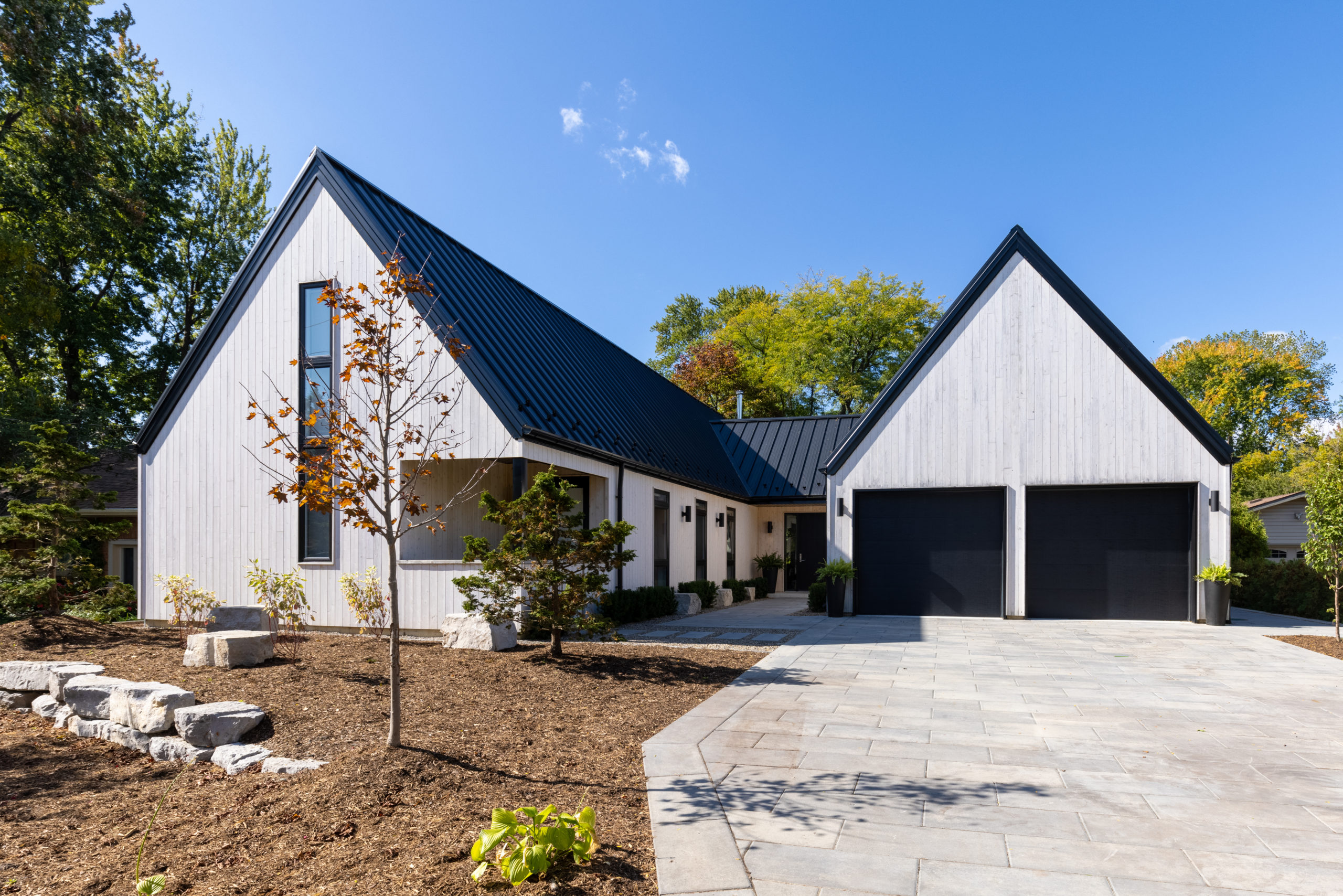
I do a lot of third-floor additions because where I live here, people don’t have room to go out all the time, so they might have some room. People want to build in spaces. Sometimes you can’t build in them or it’s within a centimeter of being up to code.
Full disclosure, our codes are in metric and in the province of Ontario, the Southern Point, we’re all imperial. All of my documents are in imperial. It makes for some fun days of converting metrics. I had to use Revit.
I don’t. I use Chief Architect.
I have a certain dimension style that I use that has dual units, the imperial and metric. I’m sizing joints or beams or spans or whatever, I’ll run a bunch of dimensions, and it gives me all the metric and imperial conversions in the same string. I got my codes on one side and my notes on the other.
That keeps your brain alive. It’s those complicated things. Any last ideas for our audience?
If you’re in the marketer position to put an addition on your home or renovate your home or both, build the right team and have the right architect and contractor. If you don’t know the right contractor, your architect should be able to put you in front of some people that he knows you’re going to click with and build the right team. If I’ve always found that people want to work with somebody that they like, click with, are not afraid to pick up the phone and make the phone call. They’re not afraid to stop by their office for coffee and chat about something that might need to put them at ease for something. It’s a team-building thing. Make sure you’ve got the right architect and contractor lined up. Patience and communication will carry it the rest of the way.
How can people find you? I know that you’re on TikTok.
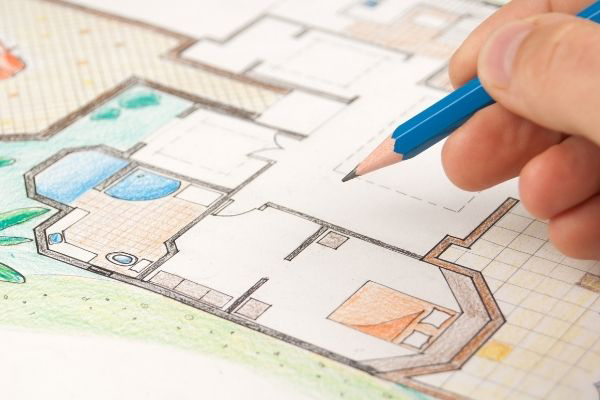
I am on any social media platform that is relevant, so Facebook, Instagram, TikTok is where I’ve had the most fun. There are tons of content on there that’s not on any of my other platforms. That would all be under some variation of @Dory.Azar.Architect. In general, my website is DoryAzar.com. We celebrated our ten years anniversary in 2021. We’re having some good times around here. If anybody wants to follow along or get in touch, that’s how.
Definitely go check out his TikTok. Those of you who are already on TikTok know it’s not all just dancing children. Thanks, Dory. Thanks for taking the time. It’s been fun.
Thanks for having me. This is fun.
—
Thanks for reading. I hope you subscribe to this show. If you don’t, please head over to wherever you get your podcast and subscribe. If you have time to write a review, that would be so helpful. Please contact me for any reason at TheHouseMaven@TalkingHomeInnovations.com. I love to hear from people. You can also join my Facebook group, which is Talking Home Renovations Together. I’m on there with a bunch of people who have been guests on the show, other architects, homeowners and contractors. We can talk about whatever issues people might have right there in the Facebook group.

If you’re at Clubhouse, come join me, 10:00 AM Eastern Saturday mornings. There is so much information on my website, which is TalkingHomeRenovations.com. Head over there for episode enhancements and other information. If you want to be a guest, that’s where you’ll find that information and the application. This show is a member of Gabl Media, which is the largest AEC network on the planet. Check out the other content on the network at GablMedia.com. This show is a production of my architecture firm, dEmios Architects, where we believe architects are for everyone. Until next time, take care.
Important Links:
- Episode Enhancements
- Architect Dory Azar
- Revit
- Chief Architect
- Facebook – Dory Azar Architect Inc.
- TikTok – Dory Azar
- @Dory.Azar.Architect – Instagram
- TheHouseMaven@TalkingHomeInnovations.com
- Talking Home Renovations Together – Facebook Group
- GablMedia.com
- dEmios Architects
About Dory Azar
 Dory Azar Architect Inc. is a small and energetic architectural firm with a great work environment. We leverage decades of residential and commercial design experience, along with an international portfolio, into memorable, user-driven architecture.
Dory Azar Architect Inc. is a small and energetic architectural firm with a great work environment. We leverage decades of residential and commercial design experience, along with an international portfolio, into memorable, user-driven architecture.